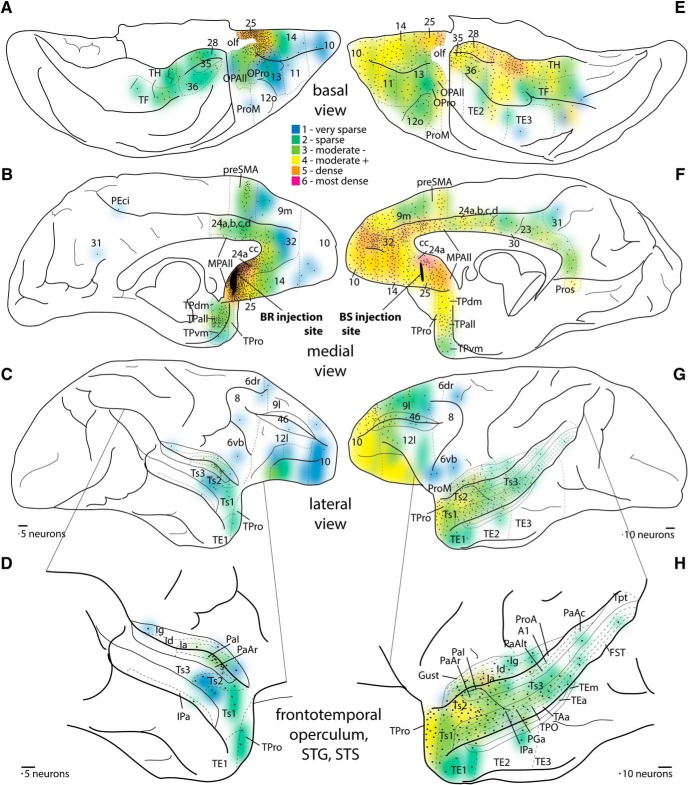Figure 7.
Density maps of projection neuron populations directed to medial A25. A–C, Density of cortical connections to A25. Black represents injection site, Case BR. A, Basal surface. B, Medial surface. C, Lateral surface. D, Enlargement of lateral temporal cortex and surrounding areas. E–G, Density of cortical connections to medial A25. Black represents injection site, Case BS. E, Basal surface. F, Medial surface. G, Lateral surface. H, Enlargement of lateral temporal cortex and surrounding areas. Colors represent the binned normalized density of neurons projecting to A25 from each cortical area, with the least dense (1 indicates dark blue) to the most dense (6 indicates red). Dotted lines indicate areal parcellation. Each black dot represents a scaled number of labeled neurons (5 neurons for Case BR; 10 neurons for Case BS) counted in coronal sections, and depicted as a topographic histogram of projection neurons directed to A25. For each area on a section, one dot was placed for the first bin of 1–5 neurons for Case BR and 1–10 neurons for Case BS, and another dot for the next bin of 6–10 neurons (11–20, Case BS), and so forth. Dots were placed only once if the area was represented on multiple surfaces, but colors were placed on every surface on which a cortical area appeared (e.g., ventrolateral 10 contains colors in A and C, but dots were placed only in A). Scale bars, 2 mm.

